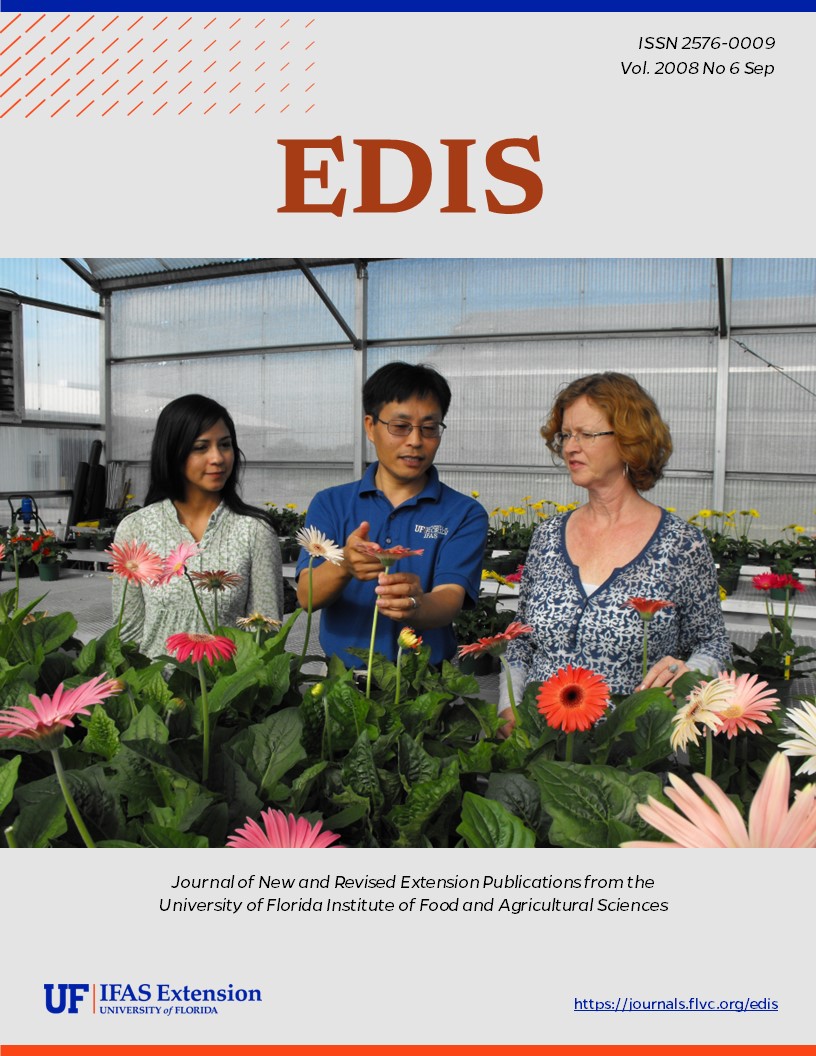Abstract
Circular 1527, an 11-page illustrated document by Bruce Hull, Sarah F. Ashton, Rien M. Visser, and Martha C. Monroe, characterizes the growing numbers of new interface residents in the south who are shaping the future of forestry. Includes references. Published by the UF School of Forest Resources and Conservation, August 2008.
References
Bliss, J. C. 2000. Public perceptions of clearcutting. Journal of Forestry 98(12): 4-9.
Butler, B. and E. Leatherberry. 2004a. USDA Forest Service National Woodland Owners Survey. Newtown Square PA: USDA, Forest Service, National Woodland Owner Survey, http://www.fs.fed.us/woodlandowners/(accessed September 18, 2004).
Butler, B. and E. Leatherberry. 2004b. America's family forest owners. Journal of Forestry 102(7): 4-9.
Erickson, D. L.; R. L. Ryan; and R. De Young. 2002. Woodlots in the Rural Landscape: Landowner Motivations and Management Attitudes in a Michigan (USA) Case Study." Landscape and Urban Planning 58: 101-102. https://doi.org/10.1016/S0169-2046(01)00213-4
Hull, R. B.; D. P. Robertson; and G. J. Buhyoff. 2004. Boutique forestry: New forest practices in urbanizing landscapes." Journal of Forestry 102 (1): 14-19.
Jacob, J. C. 1997. New Pioneers: The Back-to-the-Land Movement and the Search for a Sustainable Future. University Park PA: The Pennsylvania State University Press.
Kendra, A. and R. B. Hull. 2005. Motivations and behaviors of new forest owners in Virginia. Forest Science 51(2): 142-154.
Klunder, R. A. and T. L. Walkingstick. 2000. Rethinking how nonindustrial landowners view their lands." Southern Journal of Applied Forestry 24(3): 150-158. https://doi.org/10.1093/sjaf/24.3.150
Lee, R. G.; D. R. Field; and W. R. Burch. 1990. Community and Forestry: Continuities in the Sociology of Natural Resources. Boulder CO: Westview Press.
Rudzitis, G. and H. E. Johansen. 1989. Migration into western wilderness counties: Causes and consequences." Western Wildlands 15(1): 19-23.
Tyson, C. B.; S. M. Campbell; and E. S. Grady. 1998. Woodscaping for small landowners in southern New England." Journal of Forestry 96(12): 4-9.
Wear, D. N. and J. G. Greis, eds. 2002. The Southern Forest Resource Assessment: Summary Report (Gen. Tech. Rep. SRS-54). Asheville NC: USDA, Forest Service, Southern Research Station, http://www.srs.fs.usda.gov/sustain/report/summry/summary.htm (accessed August 17, 2005). https://doi.org/10.2737/SRS-GTR-54
Wear and J. G. Greis, 225-237. Asheville NC: USDA, Forest Service, Southern Research Station, http://www.srs.fs.usda.gov/sustain/report/soio4/socio4.htm (accessed August 17, 2005).
Wicker, G. 2003. "Motivation for Private Forest Landowners." In Southern Forest Resource Assessment (Gen. Tech. Rep. SRS-53). Eds. D. N.
Zipperer, W. C. 1993. Effects of urbanization on natural resource management. In Nurturing the Northeastern Forest: Proceedings of Joint Meeting of the New England Society of American Foresters and the Maine Chapter of The Wildlife Society (Forestry and Agriculture CFRU Information Report 33). Eds. R. D. Briggs and W. B. Krohn, 153-165. 1993 March 3-5, Portland ME: University of Maine, College of Natural Resources and Forestry, and Maine Agricultural and Forest Experiment Station.

